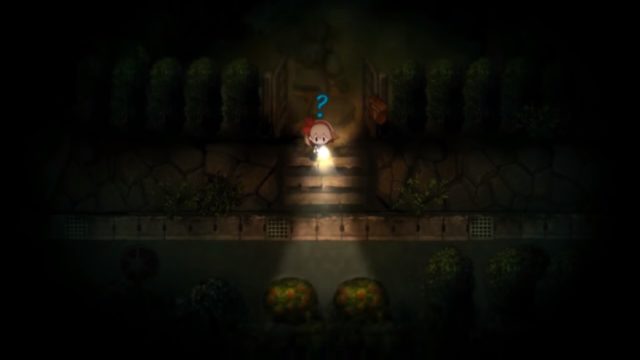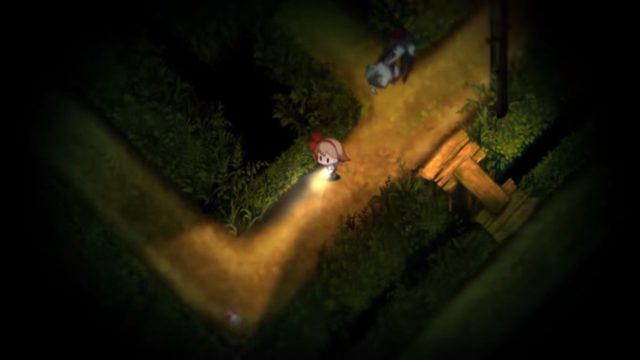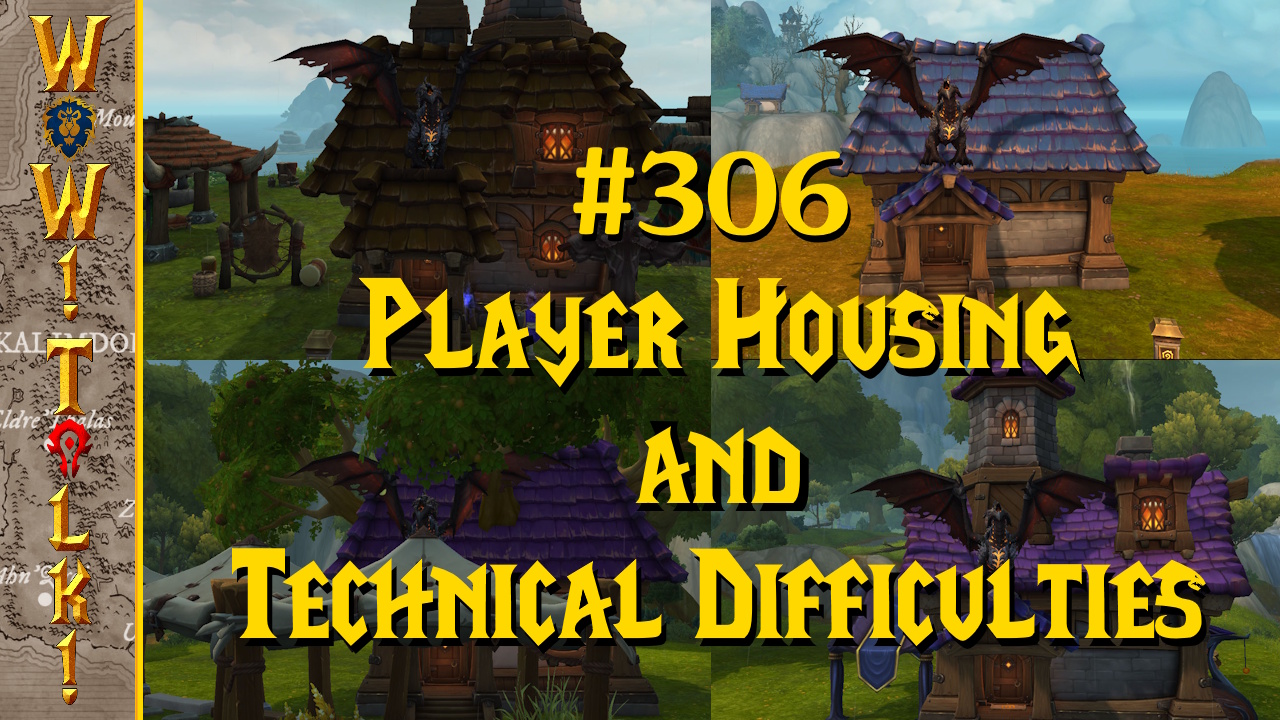At a glance, Yomawari may make people think that it’s simply a light-hearted horror game where the player is forced to explore areas that just seem scary. It quickly rips your heart out with a few jarring scares in the first few minutes, though, making it very clear what this game is all about.
You play as a young, nameless girl who, after being unable to face a truth, finds herself alone on a dark night. She must find the clues to the whereabouts of her missing dog, Poro, and her older sister. Armed with only pebbles and a flashlight, her journey begins. Yomawari will not hold your hand past the initial tutorial, and players are forced to feel just as in the dark as the young girl. Not only is the environment uncomfortably quiet and dimly lit, but there are monsters all around. Within my first ten minutes, I was dead without even knowing what killed me.
The main mechanic in the game is your flashlight. The monsters will be invisible unless a light is upon them, and they all kill on contact. The only other way of knowing if you’re in danger is if the light on your stamina bar at the bottom of the screen glows red. This means a monster is close, and if one is creeping near, it also cuts your stamina down significantly (which makes sense for a panicked young girl), making running difficult. As such, you’re forced into figuring out the tricks to get by these monsters. Some can be simply outrun, while for others, you’ll have to employ different tactics – in all cases, you have to plan your route carefully.
The game offers quick save locations throughout the town which requires the player to have a coin. They are scattered throughout the city, so it is wise for the players to explore a bit more and make sure they always have a coin on-hand to save themselves a run from their previous save point. It’s interesting to see this mechanic re-emerge since Resident Evil, which also used a finite resource to allow saving. The coin save coupled with the one hit KO truly makes it feel like a survival horror game. There are no healing items, so you must make sure every move counts.

Seeing this kind of horror game spring up gives me hope for survival horror. As games grew, they became too action horror and packed with safety (auto-saves, revivals, etc). Yomawari takes that safety and tosses it out the window. All you have to go on for hints is the young girl’s diary and even that won’t prepare you for some of the challenging puzzles ahead.
The art style is reminiscent of PS2 era RPGs. There’s something about older style graphics that really strikes terror in me. When playing new horror games, the monsters are so heavily detailed there is little left to the imagination. Amnesia played the tactic of encouraging the players NOT to look at the monster (or incur a penalty) which led to it being much more terrifying. Yomawari took note of this tactic and chose to let the players see the monsters if they choose (with their flashlight). Some people may just want to run away blindly, not wanting to see what horror lurks behind. For me, I found that I was scared, but I at least wanted to know what was going to murder me.
The monsters seem styled like Japanese horror monsters (long black haired girl, big eyes and defined teeth). This style of horror is best described as unsettling rather than the usual fanged/blood-covered beasts. Looking at the monsters, I was reminded of the manga artist Junji Ito and his nightmare-inducing creations. The kind of images you get from these kind of monsters stick with you for the long haul.
Playing as a young girl, I wondered if maybe these were figments of her imagination which made me wonder if there was some psychology in the background of this game. For example, there is an enemy which looks like a goldfish but has one giant eye on it. I wondered if that had to do with the unblinking stare fishes have. Either way, the monsters are anything but generic, and each have their own way of coming after the protagonist.

My main criticism of this game is that after about a couple hours, I found myself desensitized to the death animation. After getting caught numerous times by the same monster, frustration tends to build and the air of creepiness passes. Some of the enemies’ hitboxes are very large and players may feel they should be safe, but are caught regardless because of the range of the hitbox. I think that the game would have also benefitted from different death scenes depending on what monster had caught me. They executed a very great first encounter with a monster by flashing it in my face, but after that it was pretty bland for encounters.
The game’s difficulty mostly revolves around finding out where to go next. It doesn’t really lead players well (besides blocking off sections). This is good and bad; Good because it forces the player to explore the other areas to find out where to go, and bad because this mounts frustration if players explore for too long while trying to find something and spend hours missing a key item (I’m looking at you, Wet Bone). Yomawari does reward players that explore by adding extra events hidden all over the map for those that wish to see every monster and collect every item.
In terms of combat difficulty, the main issue is that some bosses in the middle were much harder than the last one. Truth be told, I was worried the last boss would net me over a thousand deaths because of problems with hit boxes, but it was surprisingly easy.
In summary, I find Yomawari a solid addition to survival horror for those who want to have a taste of the unsettling. It’s got beautiful art, scary monsters, great environments, and an enticing story. If you want a good set of puzzles and some challenging stealth sections, try it out! It’s not your cookie-cutter survival horror, and I applaud it for trying something new.





